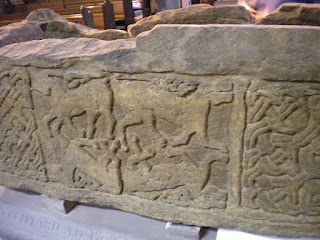King James IV

James IV., 1488-1513 The first thing to be done after the affair of Sauchieburn was to find out what had become of the King, and, when his death was made sure of, an inquiry was set on foot as to the cause of it. The offices of state were transferred to the party in power, and an act of amnesty was passed, to take in all persons who had taken part with the late King in the struggle which the nobles pleased to call the late rebellion. Two ineffectual risings to avenge the murder of the King were made by the Lords Lennox and Forbes , and three years later, to pacify the clamours of the people, a reward of one hundred marks was offered for the discovery of the actual murderers. Just at this time Henry the Seventh of England had his hands too busy at home to allow of his making open war upon Scotland, but he carried [Pg 80] on secret schemes with Angus , Ramsay , and others for the capture of the King. James, on the other hand, upheld that Pe...









